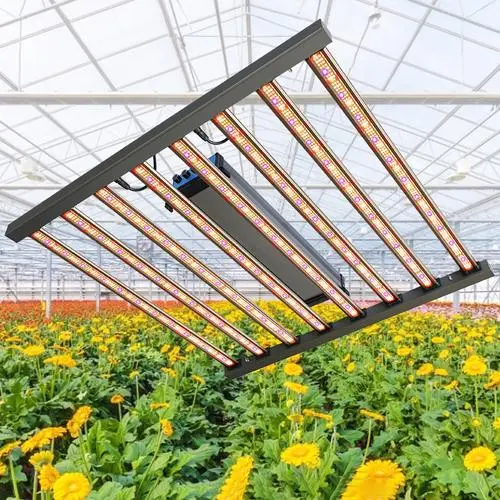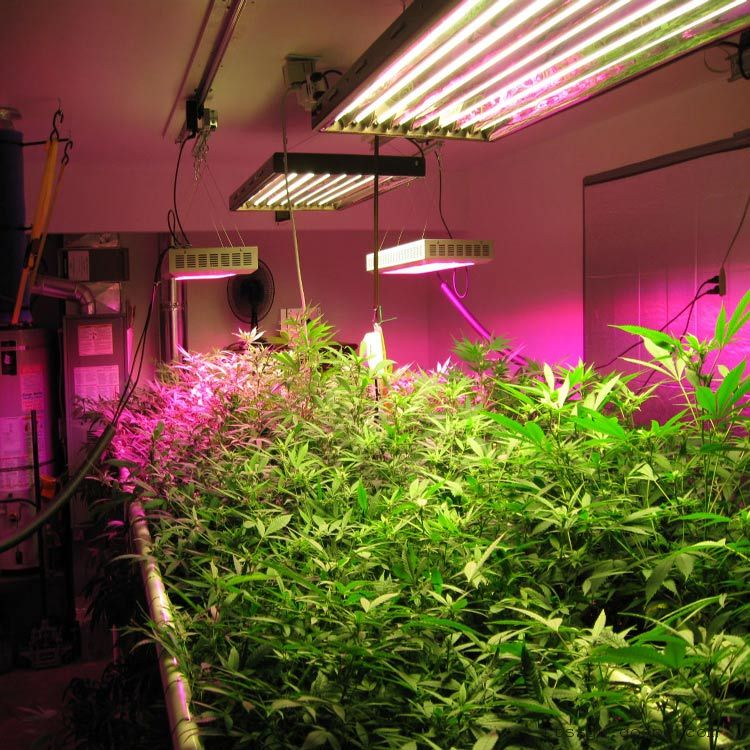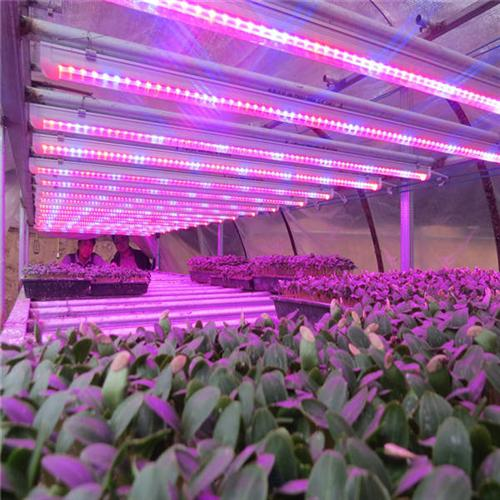I believe that everyone has more or less heard and understood about plant growth lights, and many friends have already used them. Plant growth lights use light instead of sunlight to supplement light for plants to meet the growth needs of plants. Its function is to provide light to plants and ensure the healthy growth of plants.
Plant supplement light is a plant growth auxiliary light that combines spectral control technology to supplement crops with light.

LED Grow lights are designed to provide additional light to plants to encourage their growth and development. These lights typically use LED technology, which provides the specific spectrum and intensity of light your plants require.
The effectiveness of grow lights has been proven in many studies and practical applications. Here are some key points about the effectiveness of grow lights:
1. Spectrum control: Plant growth lights can usually provide the specific spectrum required by plants, such as blue light, red light and mixed spectrum. These spectra can be adjusted for different growth stages and plant types to maximize photosynthesis and plant growth.
2. Light intensity: The light intensity of the plant growth lamp can be adjusted as needed to ensure that the plants receive sufficient photosynthesis energy. For indoor growing or environments lacking natural sunlight, grow lights can provide enough light to meet your plants’ growing needs.
3. Provide additional light time: Plant growth lights can extend the light time that plants receive every day, stimulating plant growth by simulating natural day length changes or providing continuous light. This is critical to the growth and flowering cycles of some plants.
4. Energy saving and controllability: Compared with traditional fluorescent or incandescent lamps, plant growth lights generally have higher energy efficiency. In addition, they feature adjustable light spectrum, light intensity and light duration, allowing growers to better control and optimize the growing environment of their plants.
Although grow lights can provide effective light, their effectiveness is affected by other factors such as temperature, humidity, air circulation and nutrient supply. When using grow lights, it is recommended to select the appropriate lamp based on the needs of the specific plant, growing environment and lighting requirements, and consider other factors to maximize the healthy growth of the plant.

Arrangement of fill light time
1. As supplementary lighting, it can enhance lighting at any time of the day and extend the effective lighting time.
2. Whether at dusk or night, it can effectively extend and scientifically control the light needed by plants.
3. In greenhouses or plant laboratories, it can completely replace natural light and promote plant growth.
4. Completely solve the situation of depending on the weather during the seedling cultivation stage, and arrange the time reasonably according to the delivery date of the seedlings.
How to choose a plant grow light?
Only by scientifically selecting light sources can we better control the speed and quality of plant growth. When using artificial light sources, we must choose natural light that is closest to meeting the photosynthesis conditions of plants. Measure the photosynthetic light flux density PPFD (Photosynthetic PhotonFlux Density) produced by the light source on the plant to grasp the rate of photosynthesis of the plant and the efficiency of the light source. The amount of photosynthetically effective photons initiates the photosynthesis of the plant in the chloroplast: including light reaction and subsequent dark reaction.
Plant growth lights should have the following characteristics
1. Convert electrical energy into radiant energy efficiently. 2. Achieve high radiation intensity within the effective range of photosynthesis, especially low infrared radiation (thermal radiation) 3. The radiation spectrum of the bulb meets the physiological requirements of plants, especially in the effective spectral region of photosynthesis.
Principle of plant growth light
LED plant growth light is a type of plant lamp. It uses light-emitting diodes (LEDs) as the light source and uses light instead of sunlight to create an environment for plant growth and development according to the laws of plant growth. LED plant lights help shorten the growth cycle of plants. The light source is mainly composed of red and blue light sources. It uses the most sensitive light band of plants. The red light wavelength uses 630nm and 640~660nm, and the blue light wavelength uses 450~460nm and 460~470nm. These light sources can allow plants to produce optimal photosynthesis, allowing plants to achieve optimal growth. Light environment is one of the important physical environmental factors indispensable for plant growth and development. Controlling plant morphology through light quality adjustment is an important technology in the field of facility cultivation.

Through the spectrum required by plants, it can not only promote growth, but also extend the flowering period and improve quality. Applying plant fill lights to agriculture such as greenhouses, greenhouses, and plant factories can, on the one hand, solve the problem of reduced taste, reduced yield, and occurrence of pests and diseases caused by insufficient light. On the other hand, it can also allow us to increase production and income, put the crops on the market in advance, and sell the crops at a good price.
Plant fill lights have been constantly progressing and improving, their acceptance is getting higher and higher, and planting cases are becoming more and more obvious. Plant fill lights are used in greenhouses, plant factories, vegetable cultivation, fruit cultivation, fungus cultivation, etc. Mushroom cultivation, green flower planting, and the correct use of plant fill lights can increase crop production, advance the time to market, increase the content of various nutrients, and enhance the taste. The most obvious thing it brings is great benefits!
